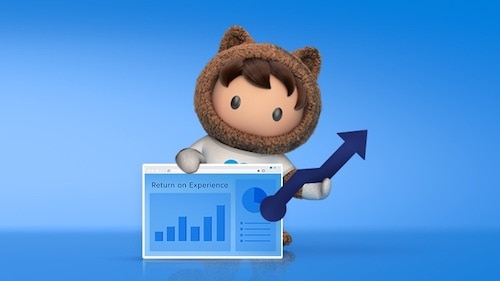Calculating ROX: Measure Your Returns on Experience Investments



Digital experiences touch just about every customer, partner, and employee. So how do you measure their success or failure? When thinking about measuring return on experience (RoX), look at the experience you’re investing in – and pinpoint the key metrics the experience will impact.

Anna Rosenman
If you’re a leader in marketing, commerce, IT, service, or sales, chances are you’ve had to play a role in creating a digital experience. You may have even taken charge of an entire experience journey that links your business to your customers, your partners, or your employees. Understanding where to make the right technology investments can be overwhelming. First, you’ll need to define how those experiences will help your bottom line while factoring in how much they will cost to bring to life. This is your return on experience (ROX).
Yet, ROX can seem hard to measure. This post explores how you can calculate ROX using the metrics that matter to your organization and department.
Find the relevant digital experience metrics
Digital experiences touch just about every customer, partner, and employee. So how do you measure their success or failure? With every metric? Not exactly. When thinking about measuring ROX, look at the experience you’re investing in – and pinpoint the key metrics the experience will impact.
Let’s say you make outdoor grills, and you create a customer self-service experience that automatically routes customers to information about products your customer owns. A customer will connect quickly to content that can help her troubleshoot issues with her exact grill model – no need to call, email, or chat with customer service. For that service experience, you could track cost per interaction, deflection rates, and customer satisfaction. Those kinds of positive experiences also show up in Net Promoter Scores and repeat business.
For a digital experience designed to support your salespeople, you could look at metrics like close rates and qualified leads. You can even start designing an experience with a key metric in mind. So a marketer concerned about customer lifetime value could focus on experiences that could cut churn and increase conversions.
Translating metrics and costs into returns
Improvements in experience can move many metrics, making ROX complicated to calculate. Often, metrics will have a clear monetary value (like time savings or sales conversion rates). It’s fairly straightforward to capture those values.
There are also a variety of less concrete metrics, such as customer effort score. To assign values to “soft” metrics, calculate how improvements or declines in the metric have historically impacted revenue, costs, or performance. Then use these results to back into an estimated monetary value associated with the metric.
Let’s not forget the other part of your ROX equation – costs. You’ll need to consider a wide range of costs, including the direct cost of your technology, implementation, training, and ongoing maintenance.
Set up your ROX equation
After you’ve identified the metrics you want to use, you’re ready to set up your ROX calculation. Here’s a simple calculation to get you started:
ROX = Net value of benefits / Cost of investment x 100%
If your inputs and outputs are clear, simply add up realized gains (or losses – hopefully not), and divide by the sum of the costs invested in bringing that experience to life. Then multiply that number by 100 to get your ROX as a percentage.
An ROX calculation in action
Some business metrics require a little work to become the net value and cost numbers that feed the calculation. Let’s go back to the example of our grill maker. Their new self-service experience increased their case deflection rate, lowering the number of expensive one-on-one customer service interactions by about 20% thanks to deflecting cases to self-service options. Plus, the new experience made interactions faster for agents, lowering the average cost per interaction from $5 to $3.75 across phone, email, and chat.
But what does that mean in terms of the net value of benefits? Let’s do the math:
For the year prior to launching the new self-service experience, agents handled a total of 100,000 interactions. Thanks to higher case deflection, agents handled only 80,000 interactions.
Based on the company’s average cost of $5 per interaction, this translates into $5 x 20,000 = $120,000 in cost savings.
For the remaining agent interactions, the cost to serve went down by $1.25. That means that across the 80,000 agent interactions, the company saved a total of $100,000!
$100,000 + $120,000 = a total savings of $220,000
How much was spent to accomplish those savings? The grill company invested $50,000 in software, $10,000 in implementation, and another $5,000 in employee onboarding and adoption, making their year-one total investment $65,000.
Now we have our benefits and costs, we can plug it into our ROX equation:
$220,000 / $65,000 x 100 = 338% ROX!
ROX for your team
A focus on lifting ROX ripples across the organization – and touches too many metrics for just one post. Over a series of five additional blog posts, we’ll explore some of the top ROX metrics by functional area. Stay tuned for posts that showcase ROX metrics for marketing, IT, commerce, service, and sales.
Make content core to experiences
Content – blogs, video, FAQs, and more – is the conversation you’re having with customers. Learn how and Salesforce CMS helps elevate the conversation by viewing “Introducing Salesforce CMS,” an on-demand webinar. Watch it now.























